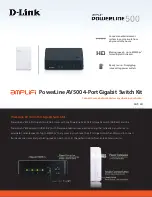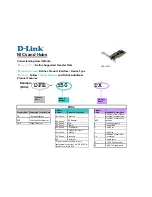
6
Port Control - Speed
Managed switch ports support auto-sensing and manual configuration. Auto-sensing enables
switch ports to automatically operate at the fastest speed possible, depending on the speed of
the attached device. Some newer switches even provide 1000 Mbps (1 Gbps) auto-sensing
ports.
Small businesses
especially those on a tight budget
may decide to postpone their
purchase of new technologies until the price comes down. Until that time arrives, these
businesses will continue using their legacy devices. Certain legacy devices, however, may not
support auto-sensing. Auto-sensing switch ports connected to these devices are unable to
ascertain the attached device’s maximum speed. Therefore, small businesses with legacy devices
should look for a managed switch whose port speed can be manually configured to match the
speed of the older devices.
Manually configuring a switch’s port speed is also helpful when you want to restrict the traffic
rate for a specific link to better balance the flow of traffic on the network.
Port Control - Half-/Full-Duplex Mode
Switch ports can use one of two duplex modes:
Half-duplex
allows packets to be sent or received, but not at the same time.
Full-duplex
allows packets to be sent and received at the same time. Simultaneous
transmission and reception doubles the bandwidth for each port. A 10 or 100 Mbps
connection, for example, becomes a 20 or 200 Mbps connection when operating full-
duplex.
Most switching ports today support auto-negotiation. Auto-negotiation automatically
determines the appropriate duplex mode a port should use, based on the capabilities of the
device at the other end of the link.
However, when working with older equipment, the two devices cannot successfully negotiate
the fastest connection possible and typically fall back to modes that are less desirable. For this
reason, network management allows administrators to manually configure duplex modes for
ports.
Port Control - Flow Control
While a high-performance switch forwards data packets at full wire speed to and from its ports
simultaneously, there may be times, however, when a switch port may not be able to accept
packets at the rate it is receiving them. For example:
The switch port may be receiving packets from multiple ports at the same time, or
The switch port may be receiving packets from a port operating at a faster speed. For
instance, the sending port might be operating at 100 Mbps, while the receiving port
operates at 10 Mbps; or the sending port might operate at 1000 Mbps, while the receiving
port operates at 100 or 10 Mbps.
If data packets arrive for a port that is saturated with other packets, the packets may overflow
the port’s buffer, resulting in dropped packets and lost data.
































